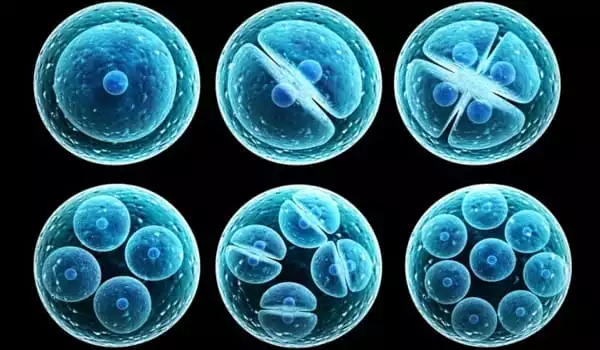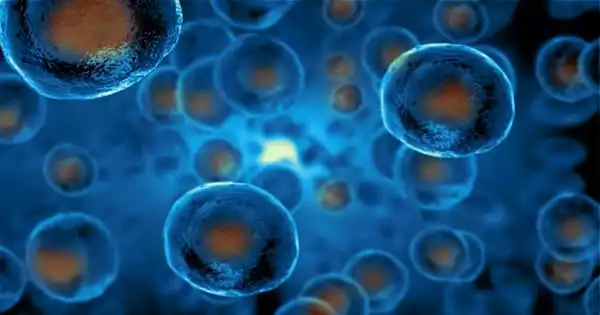Nanotechnology has made significant contributions to the science of tissue engineering by imbuing tissue-designed scaffolds with characteristics that aid in tissue regeneration. More specifically, the nanoparticle changes performed on scaffolds have numerous benefits such as improved cell adhesion and proliferation, the regulated release of growth factors, and noninvasive monitoring of the tissue regeneration process.
Stem cells have the potential to develop into a wide range of different types of cells in the body. When a person is harmed, for example, stem cells migrate to the site of the injury and aid in the healing of damaged tissues. New nanotechnology developed by a team of Texas A&M University researchers could harness the body’s regeneration power by guiding stem cells to build bone formation.
The team is led by Akhilesh K. Gaharwar, associate professor and Presidential Impact Fellow in the Department of Biomedical Engineering, as well as a fellow of the American Institute for Medical and Biological Engineering. The researchers created water-stable, two-dimensional covalent organic framework (COF) nanoparticles that can control the development of human mesenchymal stem cells into bone cells.
Because of their crystallinity, ordered and customizable porous structure and high specific surface area, 2D COFs (porous organic polymers) have received a lot of study attention. However, the difficulties in converting COFs into nano-sized materials, as well as their low stability, has limited their use in regenerative medicine and drug delivery. There is a need for innovative techniques that deliver these COFs with adequate physiological stability while also preserving their biocompatibility.
These nanoparticles could prolong medication delivery to human mesenchymal stem cells, which are extensively employed in bone regeneration. Sustained drug delivery resulted in improved stem cell differentiation toward bone lineage, and this approach has the potential to be exploited for bone regeneration.
Sukanya Bhunia
Gaharwar’s group improved the hydrolytic (water) stability of COFs by combining them with amphiphilic polymers, which are macromolecules containing both hydrophobic and hydrophilic components. This novel technique allows COFs to disperse in water, allowing these nanoparticles to be used in biomedical applications.
“To the best of our knowledge,” Gaharwar added, “this is the first report revealing the potential of COFs to drive stem cells toward bone tissue.” “This innovative technology has the potential to change the way bone regeneration is treated.”
Tissue engineering is an interdisciplinary field that applies engineering and life science ideas to the production of biological substitutes that restore, maintain, or improve tissue or organ function. Regenerative medicine is a larger phrase that includes, in addition to tissue engineering, research on the self-healing of biological things. Cells are well known to be the building blocks of tissues, the basic units of organs, which in turn are designed to fulfill more intricate roles than a single tissue could.

Even at higher concentrations, the researchers discovered that 2D COFs have no effect on cell viability or proliferation. They discovered that these 2D COFs have bioactivity and can guide stem cells to bone cells. The preliminary study found that the form and size of these nanoparticles can impart bioactivity, but more in-depth research is needed to get mechanistic insights.
These nanoparticles are extremely permeable, and Gaharwar’s team has taken advantage of this unique property for medication delivery. They were able to inject an osteo-inducing medication called dexamethasone into the porous structure of the COF to boost bone growth even more.
“These nanoparticles could prolong medication delivery to human mesenchymal stem cells, which are extensively employed in bone regeneration,” said Sukanya Bhunia, the study’s senior author and postdoc associate in the biomedical engineering department. “Sustained drug delivery resulted in improved stem cell differentiation toward bone lineage, and this approach has the potential to be exploited for bone regeneration.”
Regenerative medicine is a new multidisciplinary discipline that seeks to restore, maintain, or improve tissues and hence organ functions. Tissue regeneration can be accomplished through the combination of living cells, which give biological functionality, and materials that act as scaffolds to enable cell growth.
Gaharwar stated that now that a proof-of-concept has been established, the team’s next step in its research will be to examine this nanotechnology in a sick model. These discoveries are significant for future biomaterial design, as they can provide guidance for tissue regeneration and drug delivery applications.





